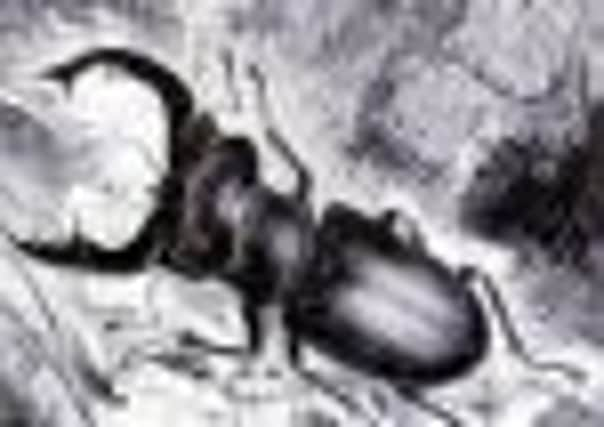Stag beetles are a great spectacle of insect life


Chichester is one of the best sites in the country for this enormous black beetle, which has always found a safe haven in the city.
I can remember back in 1964 these giants buzzing against street lamps, often falling to the ground and lying helplessly upside down on the pavements when they might be stepped on by passers by.
Advertisement
Hide AdAdvertisement
Hide AdRegrettably I did not think of making a count of the beetles, but for the following years they were always a feature of summertime as they had been back over the previous century at least.
Back then they seem to have been centred on the dead wood in a large old oak tree at Whyke, a tree that has long since gone.
Today the larvae can be present even in piles of old logs that have not been burnt, lying in gardens in the south-east suburbs of the city.
The large white grubs take four to five years to gnaw their way along tunnels of decomposing wood.
Advertisement
Hide AdAdvertisement
Hide AdThey do no harm to houses or other structures since the timber has to be in an advanced state of decay out in the open. Indeed, I take the view that this huge insect is a city treasure.
The count for 2010 of 80 beetles was made by members of the Chichester and West Sussex Natural History Society who publish their findings in their monthly newsletter for November.
They have a website for people interested in the wildlife of West Sussex: http:/chichester-nature.website.orange.co.uk.
One member Jim Brenchley who found 13 of the beetles in his garden in Sherborne Road, said that many had been killed by magpies, of which 12 were in the area, and which were still active at dusk when the beetles were flying.
Advertisement
Hide AdAdvertisement
Hide AdStag beetle numbers seem to peak every four to five years, which has to be related to that length of time for the larvae to become adult.
The jaws of the males, which they use for wrestling, are rather similar in shape to the antlers of stags, especially sika deer.
They are but one of 550 species of stag beetle worldwide.
One or two are even bigger, such as the Dorcus Titan found in Java, but ours in Chichester is a monster at more than three inches in length in the biggest males.
The next three years should see roughly half the number recorded this summer but by 2014 we shall once again be treated to one of the great spectacles of insect life on the planet, right here on our doorstep.